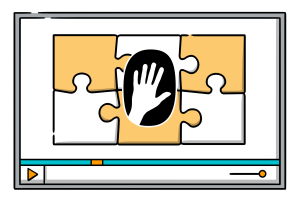Best Corporate Training Methods for Most In-Demand Jobs
 Employee training is an important component of a company’s growth and success. A well-trained workforce is more efficient and productive in their jobs, allowing them to make a significant contribution to their company.
Employee training is an important component of a company’s growth and success. A well-trained workforce is more efficient and productive in their jobs, allowing them to make a significant contribution to their company.
Training employees must give possibilities for additional training and advancement to build a happy, productive workforce. As a result, it’s critical to evaluate not just the subject to be taught but also the technique to be used to deliver it.
People have different learning methods – some are visual learners, others require hands-on experience, for others, online learning is the way to go, some need an instructor to assist them, and so on. To identify the optimal employee orientation approach for your company, Learning & development teams must first evaluate their employees’ learning styles, as well as other influencing elements including training objectives, goals, cost, and timeframe.
Choosing the ideal training approach for your staff necessitates a great deal of planning and strategy, which may be daunting for L&D teams, given the considerable expense of employee training. This blog will provide you with a list of several employee training techniques to learn and pick from.
What is Employee Training?
Employee training is described as a series of actions designed to transfer knowledge to workers in a way that results in improved job skills necessary for organizational growth. These abilities might be academic, professional, or managerial. It can also be described as a short-term project aimed at enhancing the organization’s production capacity, whether it’s for a product or a service.
Why Corporate Training?
 We know that employee training has become imperative in the industry these days but what are the advantages for employees? Consider the following benefits:
We know that employee training has become imperative in the industry these days but what are the advantages for employees? Consider the following benefits:
- Upskilling with a specific goal in mind, lowering the amount of work required to execute the same task.
- Developing talents that will be valuable when one has left the firm.
- Training leads to increased remuneration as a result of promotions.
- The development of leadership potential and the creation of new career opportunities.
- Bridging academic gaps, especially for individuals who may not have a college diploma.
10 Types of Training Methods
Here is a list of corporate training methods:
- On Job Training
- Instructor-Led Training
- eLearning
- Simulation Training
- Coaching
- Hands-on Training
- Role-Playing
- Case Studies
- Group Activities
- Cross-Training
1. On Job Training Methods
On-the-job training (OJT) is a method of learning new skills and competencies for a job in an actual, workplace environment. It’s frequently used in a live-work practice, simulation, or instructional setting to understand how to manage certain tools or equipment. Employees can learn about the work by doing it, instead of by watching lectures or consuming text-intensive materials.
This training will be performed at work, under the supervision of a senior, manager, or another qualified employee.
 On-the-job training allows new workers to have a thorough look at all of the work routines they will experience. They learn about workplace norms, how to operate technology, and any other skills they’ll need to do their job well. Although on-the-job training isn’t always the norm, it can boost efficiency and productivity in certain sectors. While doing on-job training, you should use explainer videos. That enhances the training and learning process, and employees get more engaged while creating an explainer video. The work process stays in mind, and memorizing becomes a natural process.
On-the-job training allows new workers to have a thorough look at all of the work routines they will experience. They learn about workplace norms, how to operate technology, and any other skills they’ll need to do their job well. Although on-the-job training isn’t always the norm, it can boost efficiency and productivity in certain sectors. While doing on-job training, you should use explainer videos. That enhances the training and learning process, and employees get more engaged while creating an explainer video. The work process stays in mind, and memorizing becomes a natural process.
It may also benefit the whole firm, from lower training expenses to more productive and motivated personnel
2. Instructor-Led Training
 Any type of training that takes place in a training room, such as an office, classroom, or conference room, is known as instructor-led training. There might be one or multiple teachers in this type of instruction.
Any type of training that takes place in a training room, such as an office, classroom, or conference room, is known as instructor-led training. There might be one or multiple teachers in this type of instruction.
They also use lessons, presentations, demonstrations, and discussions to facilitate learning with another person or group. It’s most commonly used to train a group. One-on-one training is also an option, although it can be costly.
When the content is unfamiliar or complicated, instructor-led training is very effective. Having an instructor on board to discuss things and illustrate ideas may make a trainee’s learning experience much more enjoyable.
3. eLearning
 Employee training can be also delivered through eLearning, which uses online videos, quizzes, and courses. Employees may complete their training on their business PCs or at the tip of their hands using a phone. There are different ed-tech organizations that provide e-Learning platforms. Like Intellipaat, Cognitive class, etc. It’s one of the simplest forms of employee training to scale up, particularly for remote personnel or those with a quality workforce.
Employee training can be also delivered through eLearning, which uses online videos, quizzes, and courses. Employees may complete their training on their business PCs or at the tip of their hands using a phone. There are different ed-tech organizations that provide e-Learning platforms. Like Intellipaat, Cognitive class, etc. It’s one of the simplest forms of employee training to scale up, particularly for remote personnel or those with a quality workforce.
It may also go a long way to ensuring your staff is involved with the training through engaging activities, exams, films, activities, or even game-based elements. Of course, eLearning has its own set of difficulties.
The graphics and images that make eLearning interesting may also render it gimmicky or soon obsolete if there isn’t a good instructional design approach behind it. There are various training courses provided by different ed-tech companies. Like UI/UX Design course, Data Science course and many more.
4. Simulation Training
 Simulations are a useful training tool for businesses that demand a specialized set of abilities for handling complicated apparatus, such as the medical and aerospace industries. Simulations that operate well replicate real-world scenarios and assist trainees to tackle problems they will likely encounter on the job.
Simulations are a useful training tool for businesses that demand a specialized set of abilities for handling complicated apparatus, such as the medical and aerospace industries. Simulations that operate well replicate real-world scenarios and assist trainees to tackle problems they will likely encounter on the job.
5. Coaching
 Planned training in learning, mentorship and coaching have several advantages. Employee development possibilities, as well as connections that make new workers feel welcomed and supported, are created by introducing a mentoring programme at your organization, including other training approaches. Improve your training with explainer videos to simplify the coaching topics and tasks.
Planned training in learning, mentorship and coaching have several advantages. Employee development possibilities, as well as connections that make new workers feel welcomed and supported, are created by introducing a mentoring programme at your organization, including other training approaches. Improve your training with explainer videos to simplify the coaching topics and tasks.
6. Hands-on Training
 Any practical training that is oriented towards the unique requirements of the employee is considered hands-on training. It takes place right on the job. Hands-on training may help individuals transition smoothly into new or existing roles while also boosting their existing abilities.
Any practical training that is oriented towards the unique requirements of the employee is considered hands-on training. It takes place right on the job. Hands-on training may help individuals transition smoothly into new or existing roles while also boosting their existing abilities.
This is a time-consuming technique that works best if there are sufficient resources to help employees throughout the program.
7. Role-Playing
 Role-playing is an interactive learning approach in which individuals act out realistic events while being supervised by a trainer. Participants may, for example, play out the conversation between an employee and a consumer. It allows them to gain practice dealing with tough consumers.
Role-playing is an interactive learning approach in which individuals act out realistic events while being supervised by a trainer. Participants may, for example, play out the conversation between an employee and a consumer. It allows them to gain practice dealing with tough consumers.
8. Case Studies
 The case study is a process that involves presenting learners with descriptive circumstances that encourage them to make judgments. The goal of the case approach is to get students to use what they’ve learned and come up with fresh ways to handle a situation or solve an issue. The best way to teach or present a case study is by storytelling. There are various techniques used for storytelling in training. Instead of focusing on the answer, the student’s method is highlighted. The case study approach may be used as a training tool to help trainees improve their decision-making abilities, teamwork, excellent interpersonal skills, and strong analytical skills. An explainer video would be great for case studies. With the help of an explainer video, you can depict a scenario that the learners should tackle – this way, you ensure their engagement and understanding.
The case study is a process that involves presenting learners with descriptive circumstances that encourage them to make judgments. The goal of the case approach is to get students to use what they’ve learned and come up with fresh ways to handle a situation or solve an issue. The best way to teach or present a case study is by storytelling. There are various techniques used for storytelling in training. Instead of focusing on the answer, the student’s method is highlighted. The case study approach may be used as a training tool to help trainees improve their decision-making abilities, teamwork, excellent interpersonal skills, and strong analytical skills. An explainer video would be great for case studies. With the help of an explainer video, you can depict a scenario that the learners should tackle – this way, you ensure their engagement and understanding.
9. Group Activities
 Group discussions and activities may be an excellent training choice for the proper set of employees. It enables numerous employees to train at the same time in a setting that is more conducive to their present teams or departments.
Group discussions and activities may be an excellent training choice for the proper set of employees. It enables numerous employees to train at the same time in a setting that is more conducive to their present teams or departments.
Instructor-led conversations and exercises are possible, as well as digital prompts that are subsequently checked by a supervisor. This sort of staff training is best suited for problems that need a collaborative approach to solve.
10. Cross Employee Training
 Cross-training is the process of preparing employees to perform multiple jobs or to do duties that are beyond their typical responsibilities. This eliminates the necessity to outsource work by allowing your staff to assist in times of necessity. Use explainer videos to describe the multiple tasks shortly and concisely.
Cross-training is the process of preparing employees to perform multiple jobs or to do duties that are beyond their typical responsibilities. This eliminates the necessity to outsource work by allowing your staff to assist in times of necessity. Use explainer videos to describe the multiple tasks shortly and concisely.
Employees can benefit from cross-training because it allows them to gain new skills and increase their worth within the firm, or transition to a job that is better aligned with their career goals.
Training Methods Conclusion
Hence, these are the top corporate training methods that help companies to train their employees to work effectively. Based on your company’s requirements and the type of work your employee needs to work on, you can choose the right training program. Introduce explainer videos in the different training models for increased engagement and better learning. Mostly, these days, eLearning is the popular training method used by most companies given the covid circumstances. If the company is technology-based then hands-on training will be the right choice. Whereas, if the company is service-oriented then, role-playing group activities type of training is best. Coming to industries that involve risks and are at high stake, if something doesn’t work properly like medical and airspace, simulation training is highly recommended.
Author’s bio
 S Krishna Raj is a Content Writer who fabricates content on the latest trends in the IT space. He has a keen interest in Artificial Intelligence, Machine Learning, and Cloud Technologies. His other interests are Motorsports and Sustainable Technologies.
S Krishna Raj is a Content Writer who fabricates content on the latest trends in the IT space. He has a keen interest in Artificial Intelligence, Machine Learning, and Cloud Technologies. His other interests are Motorsports and Sustainable Technologies.

